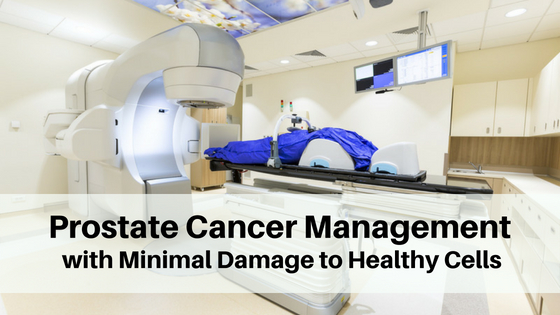Prostate Cancer Management with Minimal Damage to Healthy Cells
According to Victoria Lambert, the treatment of prostate cancer has various side effects and complications that can adversely impact the quality of your life.
What is Prostate cancer?
Prostate gland is male reproductive organ that produces seminal fluid which helps in the nourishment and transportation of sperm. Cancer refers to unlimited growth potential of prostate cells that are not only dysfunctional but are also capable of restricting the flow of nutrients and resources to healthy tissues. Nutrient deprivation to normal cells can lead to premature cell death and significant tissue damage that leads to characteristic symptoms of cancer; such as weakness, lethargy, loss of hair, digestion issues etc.
Prostate cancer is a slow growing cancer and is treatable if diagnosed in early stages.
Treatment of Prostate cancer:
Prostate cancer is usually treated with a combination therapy that includes Hormonal therapy, Cryotherapy, Radiotherapy and other options. The traditional treatment of prostate cancer can lead to a variety of serious side effects as the drug agents that are killing cancer cells, often cause injury to healthy normal cells.
In order to address these issues, a group of researchers at John Hopkins Research University discovered different ways to treat prostate cancer with minimal harm or damage to the normal healthy cells.
According to Zaver Bhujwalla, a senior clinical investigator at Kimmel Cancer Center, the major problem with most of the cancer treatments is that they damage both healthy and abnormal cells due to which various complications and side effects occur during cancer treatments.
Research Details:
The researchers at John Hopkins Research University conducted different experiments and eventually developed a method to kill cancer cells with minimal damage to healthy cells. The outcomes of their research were published in the Journal of American Chemical Society Nano.
This method is called theranostic imagining. It helps in targeting and tracking effective drug therapies merely and directly to the cancer cells. The process involves in binding the chemotherapeutic drug with specific proteins and enzymes on the surfaces of tumor cells and identifying the absorption of drug into the cancer cells. The binding of cancer drug with nanoplex i.e. tumor cell protein complex allows it to get absorbed in the cancerous cell, where the anti-cancer drug is slowly activated by enzymes.
This is by far the first anti-cancer procedure that demonstrated chemotherapies can be controlled and managed at molecular level by maximizing its effectiveness and minimizing the damage to surrounding healthy cells.
Some other experiments also conducted on mice model in which drug only targeted the prostate specific membrane antigen (PSMA) and minimizing various side effects associated with cancer treatment.
Is this treatment also effective for other types of cancers?
According to Zaver Bhujwalla, this treatment is effective for any type of cancer in which cancer cells or tumor promotes the production of certain cell surface proteins. Such as breast cancer elevates protein HER-2/neu and liver, lung and kidney cancer elevate cell surface protein like CXCR4.
This technique is more effective than traditional treatment because of its capacity to tie or bind various tumor molecules; as a result, it is difficult for cancer cells to get away from the chemotherapeutic drug and make the treatment more effective.
Conclusion:
These experiments on mice model with human prostate cancer cells suggests that there are much safer and efficacious treatments to treat prostate cancer without damaging normal healthy cells.

